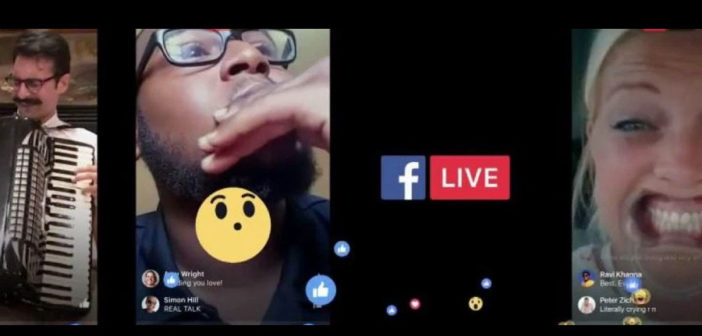Live video has emerged as an important tool in the marketer’s arsenal. With streaming video expected to account for 82 percent of all internet traffic by 2020, according to Cisco’s June 2016 Visual Networking Index report, more brands are likely to take the leap.
Here’s what they can keep in mind, according to brands that have already tested the waters:
Dunkin’ Donuts
While live streaming demands a certain level of spontaneity, it doesn’t hurt to be prepared, said Melanie Cohn, social media marketing manager at Dunkin’ Donuts. The brand has used live video to take users inside “Dunkin’ Brands University,” where the doughnut chain makes its products. The session consisted of a tour, followed by a tutorial on how to make a wedding cake out of doughnuts, and was hosted by Dunkin’ chefs.
There are several things that can go wrong when live streaming, and it is important to take the necessary steps in advance to make sure you have the best and fastest internet connection to ensure the quality and reliability of the stream. But more important, the stream needs to be driven by the right people — on screen and off.
“It is important to choose talent who are not only prepared to handle any issues when live streaming, but also have the ability to interact with the viewers,” she said. “Our hosts work closely with us on creating a detailed run of show, enjoy interacting with viewers and are comfortable handling any issues that may come up.”
Zagat
Audience engagement is a huge part of the appeal of live streaming. In fact, according to Facebook, people comment over 10 times more on Facebook Live videos than on regular videos. So it is imperative to respond to users and not be afraid of letting them guide the stream, said Ben Ezrick, head of marketing at Zagat.
Last month, Zagat set up a Tiny Cafe pop-up shop in New York City, live streaming the miniature burgers and pizzas from the shop for those that were tuning in from other parts of the country. During one of the live streams, users started inquiring about the porcelain plates, so the brand didn’t hesitate to turn its attention to those instead of the food.
“What makes live streaming different from traditional media is the real-time engagement with your audience,” he said. “That’s the expectation on the platforms, so brands shouldn’t be afraid to change the direction of their content.”
Wendy’s
Social media stars work well for live streaming, but it is easy for them to end up sounding overly promotional. The key while working with creators is to let them take the driver’s seat, said Mike Bueno, director of digital marketing at Wendy’s. That was the approach that the brand took when it worked with popular internet personality Cody Johns this summer, who demonstrated how to prepare a baconator.
“When you pull in an influencer, what you should be trying to do is asking them to put your brand in his or her car and take it for a drive versus getting them to drive your car,” he said. “The burger wasn’t the center of it; he was.”
Taco Bell
Live streaming can be a window into previously inaccessible worlds for brand fans. For its annual Friendsgiving celebration, typically reserved for social influencers, Taco Bell created a live stream from the perspective of a seat at the actual table. Viewers got to experience the food as each course came out and feel a part of the experience.
“The key is building in surprise moments to keep the fan engaged and on the edge of their seat to see what is next,” said Ryan Rimsnider, Taco Bell’s senior manager of social strategy. “For Friendsgiving, the anticipation built up for each course that was being served and got the viewer excited about what was coming next.”
This article first appeared in www.digiday.com
Seeking to build and grow your brand using the force of consumer insight, strategic foresight, creative disruption and technology prowess? Talk to us at +9714 3867728 or mail: info@groupisd.com or visit www.groupisd.com


